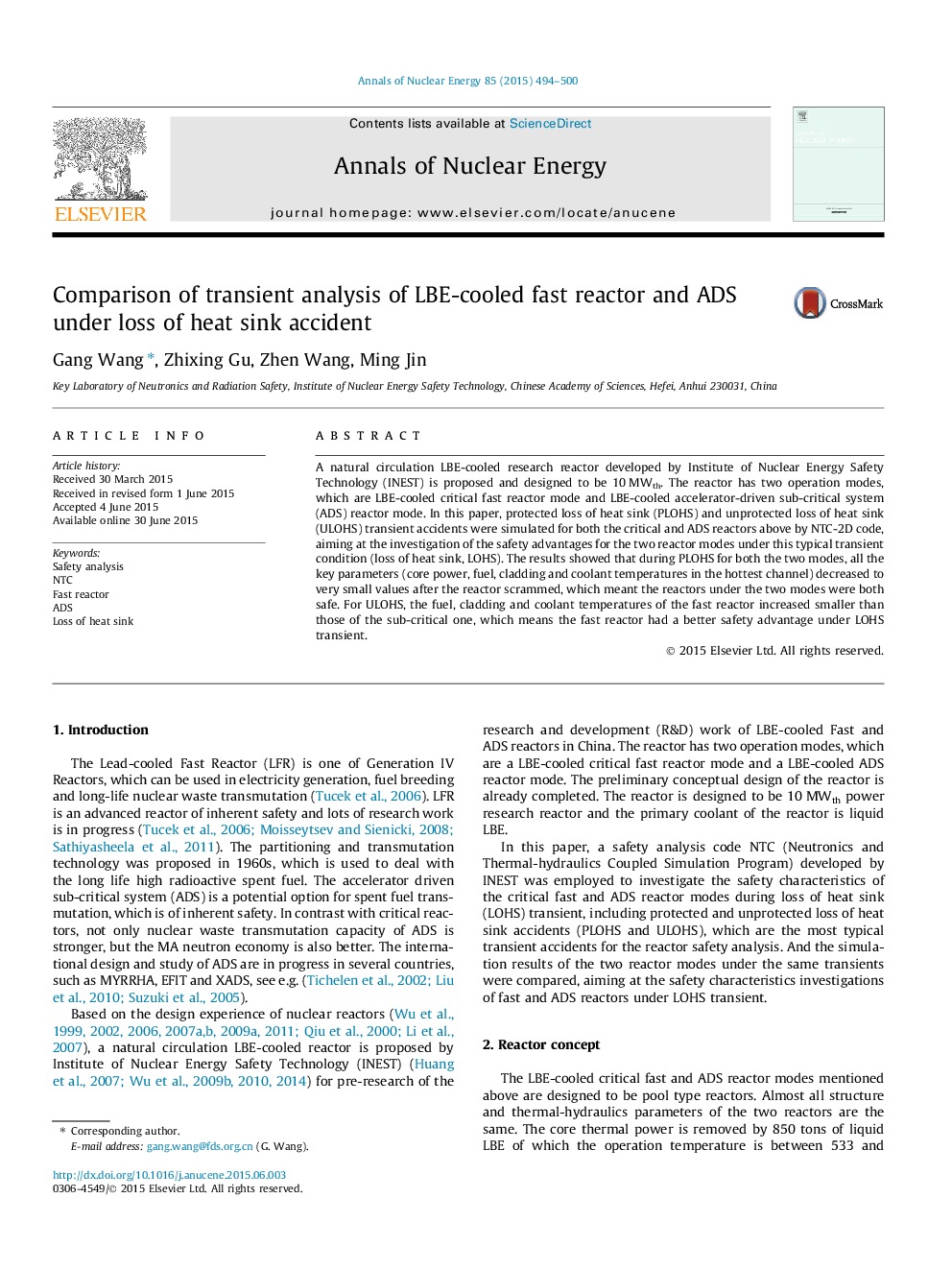| Article ID | Journal | Published Year | Pages | File Type |
|---|---|---|---|---|
| 8068351 | Annals of Nuclear Energy | 2015 | 7 Pages |
Abstract
A natural circulation LBE-cooled research reactor developed by Institute of Nuclear Energy Safety Technology (INEST) is proposed and designed to be 10Â MWth. The reactor has two operation modes, which are LBE-cooled critical fast reactor mode and LBE-cooled accelerator-driven sub-critical system (ADS) reactor mode. In this paper, protected loss of heat sink (PLOHS) and unprotected loss of heat sink (ULOHS) transient accidents were simulated for both the critical and ADS reactors above by NTC-2D code, aiming at the investigation of the safety advantages for the two reactor modes under this typical transient condition (loss of heat sink, LOHS). The results showed that during PLOHS for both the two modes, all the key parameters (core power, fuel, cladding and coolant temperatures in the hottest channel) decreased to very small values after the reactor scrammed, which meant the reactors under the two modes were both safe. For ULOHS, the fuel, cladding and coolant temperatures of the fast reactor increased smaller than those of the sub-critical one, which means the fast reactor had a better safety advantage under LOHS transient.
Keywords
Related Topics
Physical Sciences and Engineering
Energy
Energy Engineering and Power Technology
Authors
Gang Wang, Zhixing Gu, Zhen Wang, Ming Jin,
